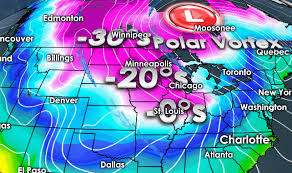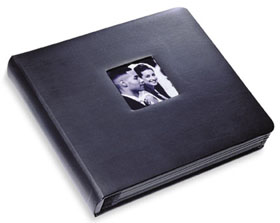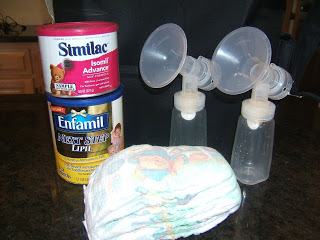
Polar vortex… It sounds like something out of a science fiction movie.
“Hurry! Into the bunker, Mr. President! The Polar Vortex is nigh upon us…”
It really is no joke, though. Here in the northern states, we’re in for some pretty cold weather in the coming days thanks to the incoming polar vortex, a swirling pool of frigid Arctic air. With it, comes bone chilling and cold temperatures, and even dangerous conditions. The National Weather Service has also issued winter weather warnings and advisories across several states.
Here are some tips to help you stay warm, comfy, and safe while our friend the Polar Vortex is visiting…
Avoid the Chill
The snow might look inviting, but this isn’t the time to head outside to make a snow man, even if it is a snow day. The incoming polar vortex is expected to bring record low temperatures to about half of the states, and these below zero temperatures can be dangerous. Prolonged exposure to these temperatures can cause respiratory problems and tissue damage. Children and the eldery are more at risk. To err on the side of caution, it’s best to stay inside as much as possible, and only go out of your house if it’s absolutely necessary.
Shelter Pets
Let’s not forget about man’s best friend, eh? In light of the impending polar vortex, it may be best to bring outdoor pets inside for the time being. Even if your dog has a dog house (as the law requires) you should still consider this. Since cats have a habit of crawling under vehicles and hoods during extreme cold, be sure to honk your horn or bang on your hood loudly before starting your vehicle. Indoor pets should also be let outside only if they need to do their business. If you have larger animals, like livestock or horses, make sure they have adequate shelter, blankets, and heat during the cold snap.
Shut Off Unused Rooms
I have a feeling that this polar vortex is going to really jack up some heating bills this week. To help stay warm and keep heating bills low, block off unused rooms. Keep confined to only a few rooms. However, never shut off a kitchen, bathroom, or any other room with water lines. The extreme cold temperatures from the polar vortex can cause these lines to freeze and possibly burst. Which, brings me to…
Take Preventive Measures With Water Pipes
The extremely cold temperatures heading our way are likely to cause frozen pipes in many areas. To prevent this, keep the heat on in kitchens and bathrooms. If any of your water lines run through cupboards, especially ones that are on an outside wall, open the cupboard doors. If you have water lines in the basement, make sure you have a heat source down there as well. This allows warm air to circulate around the pipes and prevent them from freezing. Finally, leave your cold and water running just a little; there’s a much smaller chance that moving water will freeze.
Use Caution With Space Heaters
The polar vortex will be enough to make even the toughest of the tough want to break out the space heaters. Before you do, though, make sure they are designed and approved for indoor use. Try not to leave them running unattended and keep them well away from anything flammable, including your carpet, rugs, and curtains.
Check Smoke and Carbon Monoxide Detectors
Now would be a good time to double check your smoke and carbon monoxide detectors. Make sure they’re in proper working order before you start firing up the wood stove, fireplace, furnace, or space heater.
Check On the Elderly
Children and the elderly are most at risk during cold snaps like this polar vortex. If you have any elderly relatives, friends, or neighbors, it may be a good idea to check on them periodically.
Prepare For the Worst
You know the saying – “hope for the best, but prepare for the worst.” Or something along those lines. Chances are, you’ll come out of the cold snap from the polar vortex with all of your fingers and toes and nothing but a little chill. However, it doesn’t hurt to be prepared. Keep your vehicle’s tank full, and also keep bottled water, snacks, and blankets in it as well, in case you need to leave your house and get stranded. Speaking of which, you should also have a backup heat source, bottled water, and snacks that don’t need to be cooked, flashlights, a radio, and batteries in case the electricity goes off. You should also have a plan for what to do in case you lose heat in your own home. You could make arrangements to stay with a neighbor or family member if this happens. Just remember to bundle up if you need to head outside.






